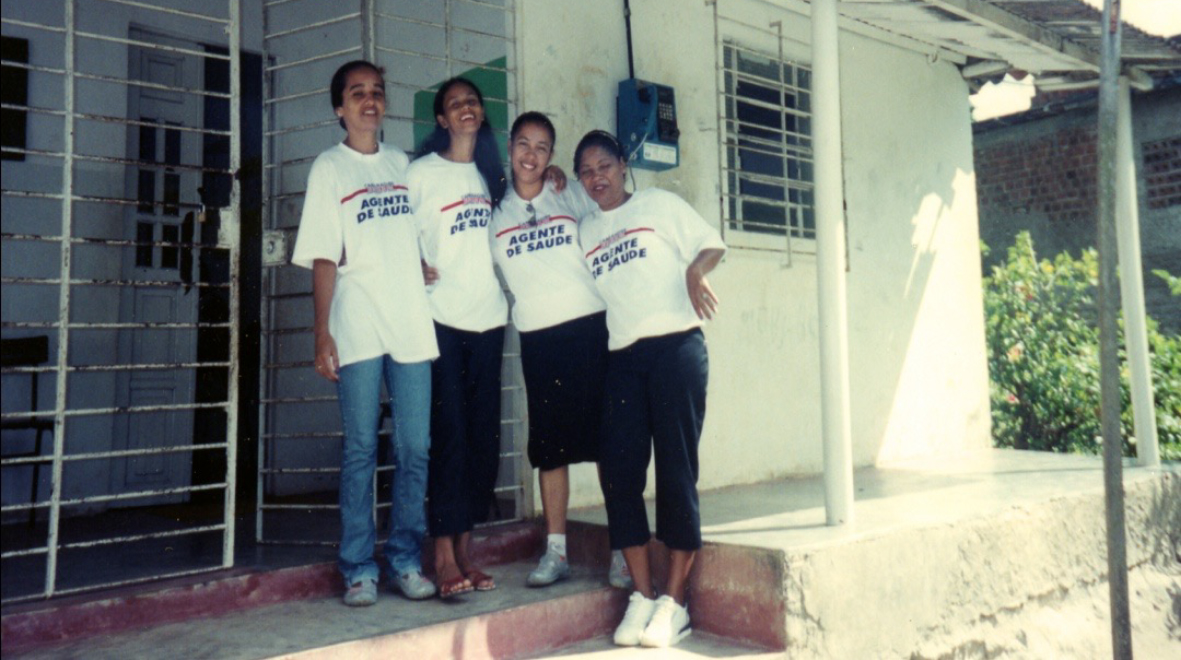
Back in 2011, I was telling a senior consultant in Public Health about Brazil’s extraordinary primary care system which is based on an army of over 250k community health workers (CHW). It had been established in the northeast of the country in the mid-1990s, in response to a cholera epidemic, and since had scaled nationally, now serving over 70% of the population. The principles seemed simple enough. Individuals from a neighbourhood are recruited and trained on a wide array of health and social care issues for a few weeks and then spend their working days visiting all the households that they are responsible for. Not many households, just around 200 each, but each CHW makes sure that the households get at least one visit per month.
Building trust in the community
The CHW has their own ‘patch’ they are responsible for, they assess the needs of the community, they develop trusting relationships with the households, and they work with the local primary care team to ensure that any health and social care issue that might arise gets resolved quickly. Where there is a need, they might organise community health education groups, signpost to other community assets, identify individuals eligible for services but that haven’t accessed them, for whatever reason. They would reinforce public health messaging, resolve vaccine hesitancy, improve screening uptake and support the management of individuals with multimorbidity. In their patches, they would identify at-risk children, truancy, social isolation and loneliness, and support individuals with low-level mental health problems. If a household member is discharged from hospital, they go visit them the next day to make sure they are ok.
From a health protection point of view, they can contact trace and identify and give advice about vectors and their breeding grounds. Health promotion is provided directly into the household on weight loss, healthy diet, physical activity, breastfeeding, falls risks, foot hygiene for diabetics and smoking cessation. The list goes on and although they don’t diagnose or prescribe medication, essentially Brazil’s model of primary care is based on one named and trusted individual, providing low-level technical support, holistically, to all households in a small, but specified territory.
The impact on health outcomes
The evidence shows that this system has reduced mortality for cardiovascular and cerebrovascular diseases significantly. For example, areas with high coverage of this model (i.e. greater than 70% coverage) had 18% lower mortality for stroke, and 21% lower mortality for heart disease, all other things being equal (Rasella et al 2014). What’s more, this model only costs $50 per person per year in Brazil. If this model were a pill, we would all be taking it. It’s not difficult to understand why the CHW model has had such an impact. Small but effective changes made at scale lead to significant shifts in outcomes downstream. The epidemiologist Geoffrey Rose coined this the ‘prevention paradox’. Even though individuals might themselves only benefit from these interventions by a tiny amount, the impact on population health is enormous.
So when that senior consultant in Public Health responded “What could we possibly learn from Brazil?” I was shocked. Having worked as a general practitioner in the northeast of Brazil, between 1999-2003, I couldn’t quite understand why, based on no apparent reason, this model was being discounted, simply because of where it was from. The response wasn’t about the lack of an evidence base (there is plenty), it wasn’t about the inappropriateness of the model for the UK (there is no specific reason), it was simply that the Consultant didn’t like the idea of learning from Brazil – perhaps perceived to be inferior or simply too different. In recent years, we are becoming more aware of how entrenched colonial perspectives can lead to intellectual micro-aggressions, a kind of snobbery, and how this fixes us to pay attention more to geographies that we ‘respect.’ This is unhelpful and it prevents us from dispassionately assessing evidence, wherever it may be from.
So, what can we learn from Brazil?
Well, we can learn how to deliver community health services at pace and scale. We can learn how to democratise primary care through closer involvement with the community. We can learn how to establish closer links with households rather than wait for individuals to choose (and often fail) to access healthcare. We can learn to take a more proactive approach, identifying problems when they are relatively small, not waiting for them to present at A&E. We can learn how to integrate health and social care at the household level rather than adhering slavishly to organizational boundaries that were established decades ago. We can learn how to provide care at extraordinarily lower cost without scrimping on quality or safety by shifting roles and responsibilities to a cadre better placed to deal with issues of lower complexity. We can learn how to integrate primary care and public health, ensuring that primary care teams take a population health perspective of their communities rather than reacting endlessly to a steady stream of problems passing through their clinic doors. All this, and more. It strikes me that given today is World Health Day, a day where, after a pretty horrendous year, we need to acknowledge and celebrate all that promotes and supports health, in its widest sense, then looking to Brazil, and the many other countries that have similar CHW approaches e.g. Ethiopia, Pakistan, China, South Africa, is a good place to start.

From Brazil to Westminster Council
Dr Connie Junghans is a GP and Epidemiologist at Imperial College London and a Public Health Specialist at the Bi-borough (Westminster City Council and the Royal Borough of Kensington and Chelsea). Inspired by the Brazilian experience she has led their efforts to pilot the CHW model based on the Brazilian experience. It launches in April, with five CHWs recruited and deployed to a ward in the City of Westminster, working with Dr Sheila Neogi, a GP partner at the Pimlico Health Centre and with the support of the NIHR Northwest London Applied Research Collaborative (NWL ARC) which will be evaluating the pilot. We will be asking is it acceptable to residents, how have the CHWs integrated into and support primary care services and other services, and has there been any impact on uptake of vaccinations and screening programmes?
This is one example of many where a partnership of the NWL ARC with the Bi-Borough has led to research with measurable impact for the community. Two other localities (one in Cheshire and Merseyside, and one in Calderdale) are also now exploring the model for implementation in their settings. The National Association of Primary Care (NAPC) is promoting the model. It is clear that the COVID19 pandemic has created a burning platform to move to models that do more, with less, recognising that services must accommodate the unpredictable complexity of each household’s health and social care experience, and not be defined by a priority risk stratification. I look forward to seeing how these pilots progress, proving to others that there is a lot we can learn from Brazil, and to one day getting regular visits from my own CHW.
Dr Matthew Harris is a Clinical Senior Lecturer in Public Health, in the Department of Primary Care and Public Health, Imperial College London, and he is an Honorary Consultant in Public Health Medicine in the Imperial College Healthcare NHS Trust.
Lead photo: Shutterstock (ID 105707819).